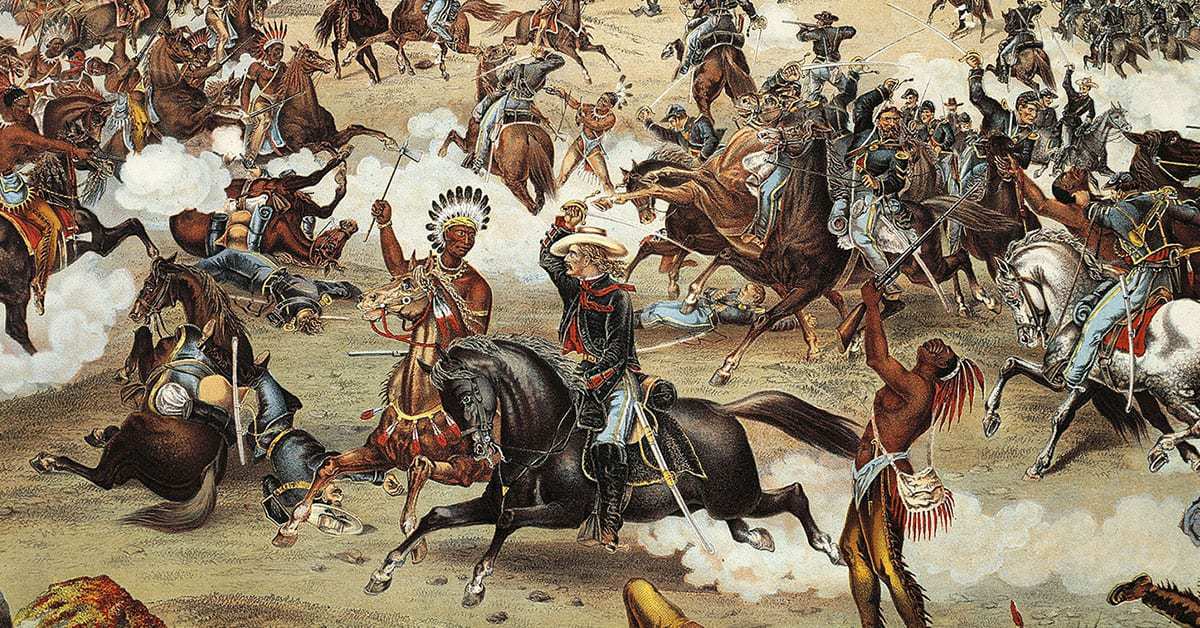It has often been a misconception that the American Indians’ one great victory was against general Custer and that Native Americans had largely suffered endless strings of defeats. Well, the Native Americans did essentially “lose” the war for America, but they won several battles along the way. Their victories did everything from protecting their villages from destruction to winning respect and even sympathy from Americans in the later years.
Native Americans were far from peaceful, as even before Europeans arrived tribes waged massive wars against each other. Whole swaths of territory changed hands as tribes were pushed around the Americas. The Maya and Aztecs simply dominated the surrounding regions with their military might. Native tribes were fiercely proud of their warrior cultures in general. From the 16th to the 19th century and from Mexico to Ohio and even California, here are a few of the moments of pride in Native American warrior tradition.

La Noche Triste
Yes, Cortez and his Conquistadors took down the Aztec Empire, with a total death toll in the hundreds of thousands, but they did have one really bad night on their road to conquest. La Noche Triste, in English: The Night of Sorrows, saw at least twice the number of Westerners killed than at the Battle of Little Bighorn.
When Cortez and his men entered the Aztec capital of Tenochtitlan, a beautiful island city connected to the mainland through several long causeways, they had a tense but peaceful stay. Realizing the horrors of sacrifice as well as the potential for more gold than they could imagine, the men took the Aztec Tlatoani (King) Montezuma hostage within the city. Eventually, the king was killed in a sort of riot and the Spaniards had to get out of the city before the ravenous population (250,000 people) overwhelmed them.

Deciding on a night retreat the Spaniards even planned ahead and built a portable bridge for the damaged sections of the causeway, but Cortez mad an error of allowing any man to keep and carry whatever treasures they could hold.
The men were soon spotted and a fierce battle ensued. Warriors in canoes rowed up on either side of the causeway and warriors hopped in front to block the path. Many of the Aztec elite Eagle Warriors took part in the attack. Cortez led a vanguard of cavalry, but the force also struggled to bring their artillery and treasures as well.
Spanish armor held well, but men were still tackled and dragged back to the city. They were taken to the tops of the temples and sacrificed in full view of the fleeing Spaniards. Others fell into the lake and drowned, laden with armor and treasure. The Aztec warriors were ferocious in their assaults and continued the length of the long causeway.
Numbers are difficult, but about half or more of the 1,000 Spanish were killed and nearly all the survivors, including Cortez, were wounded. Thousands of the Spanish native allies (the Tlaxcallans) were also killed. Though it can be called a victory by some, as Cortez and many of his men did indeed escape, it wasn’t called “the night of sorrows” for no reason. Cortez viewed it as a terrible tragedy.
Cortez followed up this defeat with a resounding victory against the pursuing Aztec army, using a series of cavalry charges to break the massive Aztec army that was too intimidated and confused by the concept of cavalry. Cortez needed a year and a massive smallpox outbreak in the city before he was able to return and conquer it.

